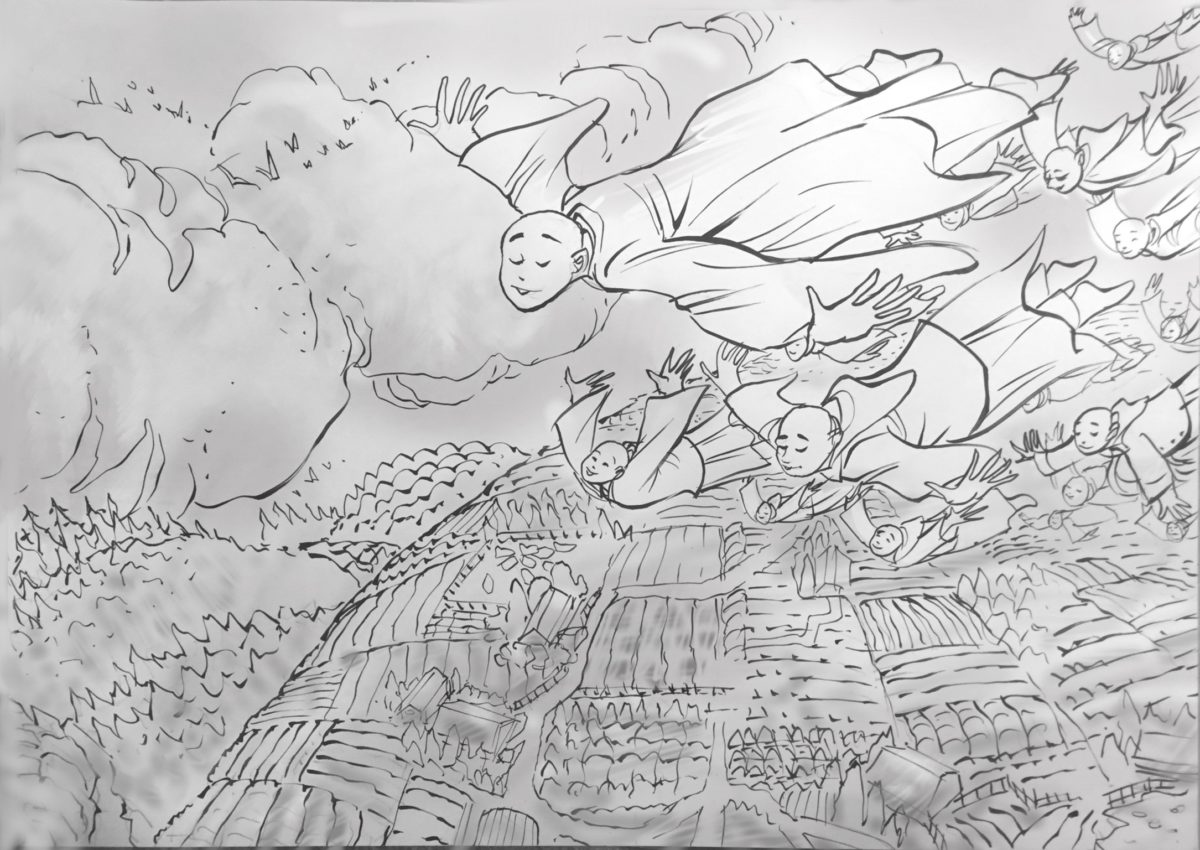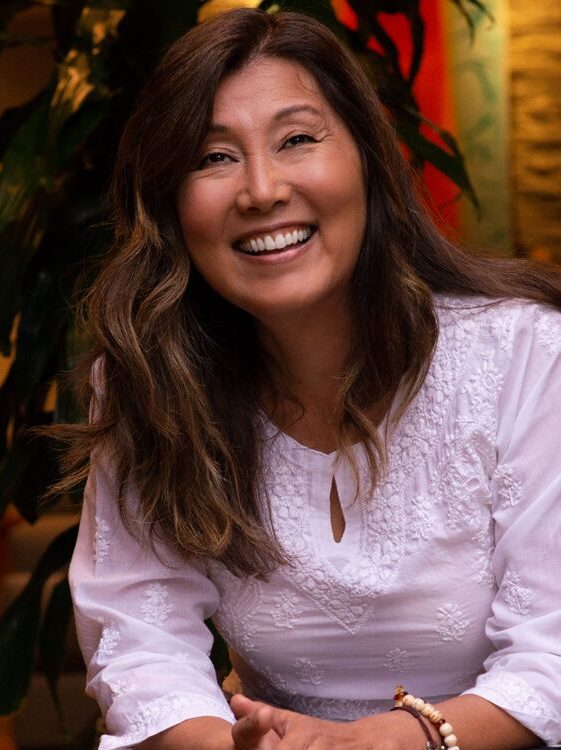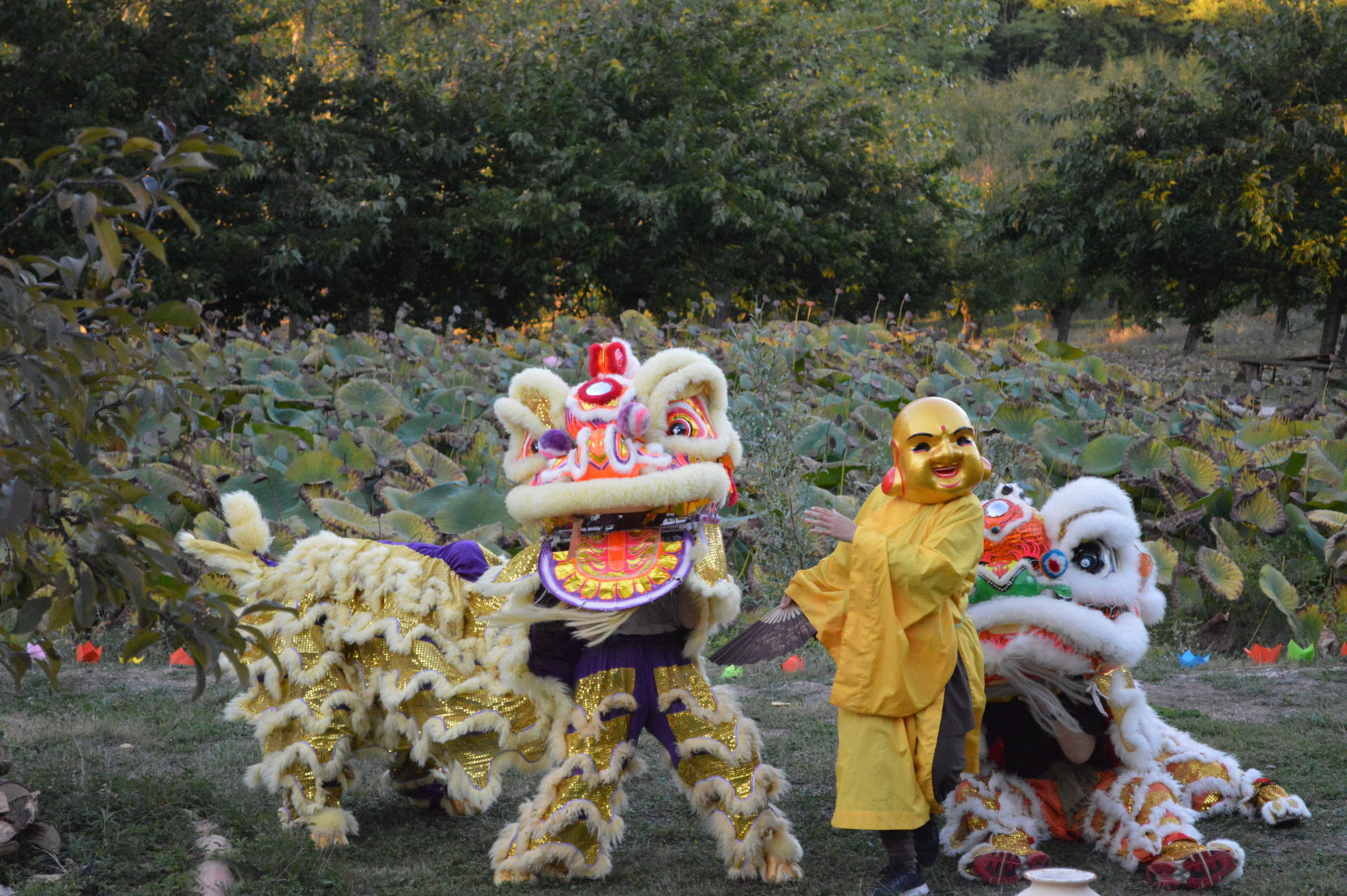By Judy Nakatomi

Thich Nhat Hanh taught me something simply beautiful: I could transform and heal inter-generational sorrow and shame. I could help my parents, my ancestors, and my children heal, and they could help me heal. But first, I needed to look deeply and honestly into the feelings in the feelings, the body in the body, and the breath in the breath. I needed to embrace the truth.
I am a descendant of incarcerated people.
By Judy Nakatomi

Thich Nhat Hanh taught me something simply beautiful: I could transform and heal inter-generational sorrow and shame. I could help my parents, my ancestors, and my children heal, and they could help me heal. But first, I needed to look deeply and honestly into the feelings in the feelings, the body in the body, and the breath in the breath. I needed to embrace the truth.
I am a descendant of incarcerated people. I am a descendant of Hiroshima and Fukuoka and atomic bomb victims. I am a descendant of survivors. I carry the legacy of compassion and energy to heal from my ancestors. I rise from strong and resilient island people Who chose to survive and thrive. I walk the Earth for you. I walk because of you. I am your continuation.
A few years ago, I attended a People of Color retreat at Deer Park. In the Ocean of Peace meditation hall, Rev. Zenju Earthlyn Manuel greeted the ancestor altar and honored the offerings of the Sangha’s photographs, weavings, rocks, prayer beads, and poems. I had offered a writing she read aloud from the altar, "I am a descendant of incarcerated people." Rev. Zenju's clear and empathic voice let the truth penetrate deeper; it's okay. I don't have to run away from the truth any longer. It's out in the open.
I became aware this would be a new beginning of understanding, and of revealing how I would heal intergenerational sorrow and shame and reconcile. Hearing my truth through another's voice took on an energy and urgency that led to an opening, a noble messenger. I felt invited to heal the sorrow of learning as a young child. I learned what it meant to realize that your government incarcerated your parents and ancestors and to know the scars of shame that can carry forward to multiple generations. I also began my Order of Interbeing aspirancy. Healing and reconciliation began to unfold. I accepted the invitation.
I began to embrace and claim my heritage as Thay wrote so eloquently in the poem, "Our True Heritage.” I attended a pilgrimage with my two sisters in 2016 to Tule Lake, California, one of the ten concentration camps in the U.S. My father, grandfather, aunts, and uncles were incarcerated at Tule Lake for three years. I walked the concentration camp site, listened to elder survivors’ stories, and participated in a Buddhist memorial ceremony to honor our ancestors in this place where 10,000 people were once forcibly incarcerated. No grave markers stood at the cemetery site; I remembered my grandfather transitioned at Tule Lake.
I breathed in the arid air and stood with hundreds of pilgrims in the unrelenting summer sun, imagining thousands of families, young children, and elders who were imprisoned there for looking like an enemy. We stood together on charnel ground and recognized our ancestors may have been friends; a sense of kinship lightened the loneliness of our shared identity. I imagined the long train ride from Sacramento, shades drawn, and soldiers guarding thousands in darkness. What inner strength did it take to arrive at this destination with a sense of identity and dignity intact? I multiplied it by 120,000 beings. 1
My next destination was Hyde Park, New York. My husband and I went to visit the FDR Presidential Library and Museum on President Roosevelt’s family estate President Roosevelt signed Executive Order 9066 that authorized forced incarceration of both my parents and 120,000 Japanese Americans in 1942. Before I departed for his estate, I shared with my then ninety-two-year-old mother that I intended to offer loving kindness to FDR through walking meditation and to heal our family wounds.
I practiced walking meditation to offer forgiveness to both Eleanor Roosevelt and FDR on the vast estate and on our way to their individual private cottages. This was not easy. I recognized the path of forgiveness can be a difficult, continuing process that contains not only my own unresolved pain but also that of my parents and grandparents. I breathed in the collective conditions of the time of fear, anger, retaliation, political fervor, and the pressure to appear strong and resolute. I knew in my heart that the path of forgiveness would require much attention, love, and understanding beyond a day of walking meditation.
Seeds of forgiveness were watered in Hyde Park. Upon my return, I noticed my mother’s willingness to talk more vividly about her concentration camp experience as a teenager. Emotions poured forth through her tears; her voice quivered. I accepted that the seeds of forgiveness and loving kindness of incarceration may not have been watered for a long time.
It is intimate to be with both my mother’s strong emotions and mine. I feel closer to my parents, siblings, children, and ancestors as I let myself dive into the murky depths of what it means to have lost so much. In many ways, the voices of generations were muted, and the loss of one’s voice is a harsh wound. I continue to look at the ways my heart can heal through forgiveness.
A year later, I returned to the source of my roots in Japan, where I met relatives for the first time. The essence of the air, surrounded by salt water, felt so familiar. I was returning home. I felt a kinship with the islands, the shrines, peaceful gardens, towering cedars, and bamboo forests. I met my father's second cousin and learned that their aunt and a nurse perished at ground zero in Hiroshima the day the U.S. dropped the atomic bomb.
There was some truth to the taunting I heard as a child, "You bombed Pearl Harbor."
Hiroshima lives in every cell of my body. There is no separation, no hyphen, or dash between Japanese American to divide me.
I am Japanese and American. I'm a survivor of the atomic bomb in Japan and a survivor of incarcerated family in the United States. I am learning, understanding, and reconciling the truth. These are my true names and homes, and I can hold and honor both.
It was a deeply meaningful time to heal at these significant places while I studied the Fourteen Mindfulness Trainings. My mentors and Dharma teacher supported me on this journey that captivated much of my attention, my concentration, and our discussion.
I have grown to understand this is a journey of love. To be rooted in love is not easy. The simple phrase is a beautiful aspiration. I need to ask myself continually: Are these actions and words rooted in love and understanding? I understand that when I can be honest and vulnerable, healing can begin. I know I’m not alone. I have my ancestors and teachers as my guides. We are walking the path together. We are learning the art of truth, and reconciliation requires love.
I am dedicated to practice true inclusivity. Today, it is reflected in preserving and nourishing Sangha space. I am present to support and care for those who may feel marginalized or invisible in our Sanghas. I aspire to be a voice that continues Thay's beautiful teaching: We all have the capacity to heal. I offer the energy of love, generosity of spirit, and courage of my ancestors and teachers to heal with openness and understanding.
1 The number of internees in ten U.S. concentration camps.

Judy Nakatomi, True Moon Dwelling, practices with Compassionate Heart Sangha in Encinitas, California and a number of People of Color Sanghas. She also serves as a Ministerial Assistant at Vista Buddhist Temple.

